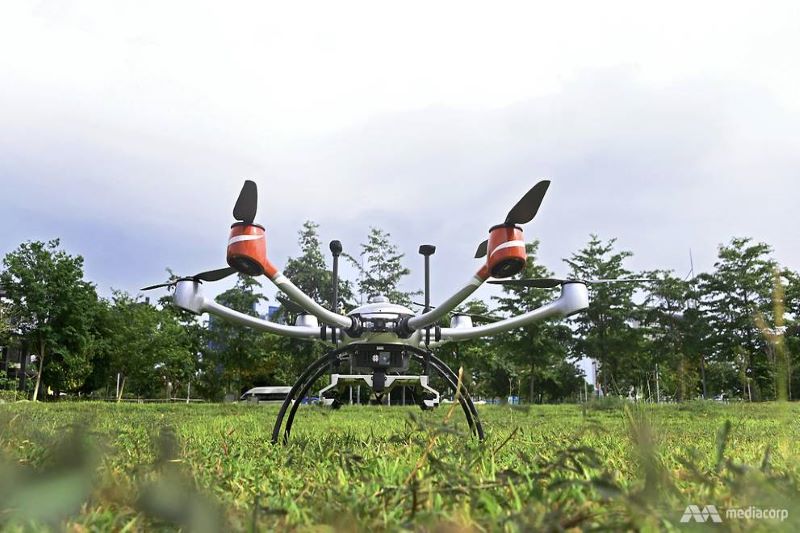
Singapore government is taking steps towards expanding the commercial use of drones to manage air traffic in future skies. In the first of such trials which are scheduled for March this year, multiple drones will take to the skies near Marina South Pier to test the effectiveness of an unmanned air traffic management system. If the trial is successful, it could be used to safely and efficiently manage drone traffic at scale.
The drones are built-in with a technology that makes sure that it does not collide with other drones using an automated system. This system can deconflict and monitor multiple drones flying in Singapore’s limited air space.
Sanjay Suresh, Head, Business Development, Nova Sytems Asia shared that first, the system lays out the flight plan for the drone after checking the flight schedule and path of other drones. The system also can alert the done through multiple channels in case there is a change in other drone’s direction or flight time.
The team at Nova Sytems has run numerous tests with more than 500 drones at the same time in a virtual setting. The live test that is scheduled for the second week March is the final milestone before the project is launched. Up to 6 drones will fly above the waters in the Maritime Drone Estate near the Marina South Pier. This minimises the risk to people and property while simulating real-time marine use cases.

“We want to fully stress test the system to make sure that a package needs to be delivered from the shore to a ship is fully aware that there are other drones performing rescue operations and doing vessel checks. We want to do this as we see it as a very possible future scenario” says Ryan Lee, Managing Director, Nova Systems Asia.
Data like the ship positions and scheduled movements will be included to help drones avoid them during the trial. The operators can also add weather conditions and flight patterns of migratory birds in future so that the drones can respond to these situations
The trial is also pivotal for the authorities as it will help them set in place the regulations with drone use likely to be ubiquitous in the near future. Ryan shares that the days are not far when people might have their own drones fetching them meals and goods from the market. Therefore, it is important to set regulations in place on time.
In trying to understand an unmanned traffic management system and the need to test it we found out that aircraft are guided safely by air traffic controllers communicating with pilots via radio, a system known as air traffic management (ATM). This direct, point-to-point, line-of-sight communication between an operator and an aircraft is the industry’s standard mode of operation. But estimates show that the growth of commercial air traffic is will ultimately exceed the capacity of a human-centred system—and this is just for human-piloted flights.
As unmanned and self-piloted operations continue to multiply, ATM systems will need to shift to a more scalable model: a digital system that can monitor and manage increased activity. This system is called Unmanned Traffic Management (UTM), or a networked collection of services that communicate together based on common rules. Rather than relying on centralised control, UTM frameworks around the world will use the principle of distributed authority, which opens up the system to more service providers who can adapt as the market evolves and needs change.
In practice, UTM means aircraft will no longer have to speak to a single entity, such as an assigned air traffic controller. Instead, it will be able to communicate freely with multiple service suppliers. These suppliers will be held to relevant safety, security and performance standards by authorities, and will be able to coordinate with the rest of the network to make efficient decisions based on specific flight objectives. The transition will be gradual, but one that is important for the global aviation system’s future viability.
















